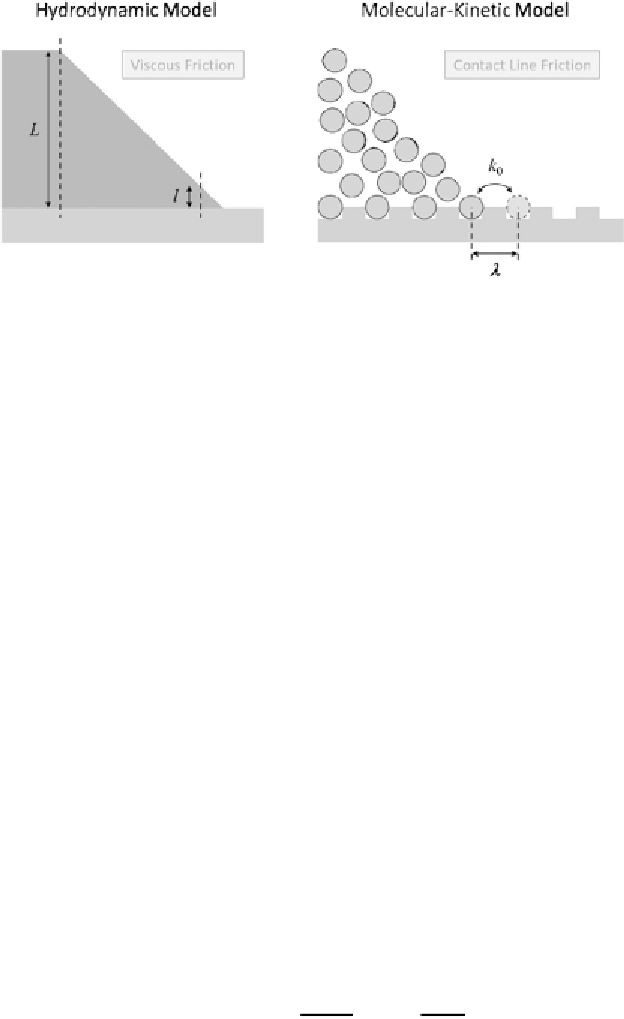Biomedical Engineering Reference
In-Depth Information
Figure 2.
Hydrodynamic and molecular-kinetic approaches to the dynamics of wetting.
states, the dynamic contact angle,
θ
, changes in time and is a function of the speed,
u
, of the moving contact line.
The velocity dependence of the contact angle is most often described in terms
of a hydrodynamic model or a molecular-kinetic model [52] (Fig. 2). In the hy-
drodynamic approach, a small zone in the vicinity of the contact line (characteristic
size
l
) is effectively excluded from consideration as the no-slip condition is violated
[53-55].
An elaborated hydrodynamic model has been provided by Cox [54] but a simpli-
fied version, derived by Voinov, performs well for dynamic contact angles smaller
than 130
◦
. Voinov's equation is [53]
9
μu
γ
ln
L
θ
3
θ
0
+
=
l
.
(6)
In this model the main dissipation mode is viscous friction and the viscosity of the
liquid,
μ
, naturally appears in equation (6). The influence of the macroscopic length
scale,
L
, and the microscopic length scale,
l
, is weak because of the logarithmic
dependence. The viscous dissipation,
D
HD
, has been estimated for a liquid wedge
contained between
L
(e.g., droplet size) and
l
(e.g., slip length) assuming a film
flow under a fixed pressure gradient [55]
μ
∂u
y
∂x
2
const
μu
2
θ
ln
L
d
x
d
y
d
z
=
D
HD
=
l
.
(7)
The molecular-kinetic approach describes the macroscopic movement of the contact
line as a series of molecular jumps. Each molecular jump is described as a rate-
activated process and arrives at the following equation [56-58]
2
k
B
T
γλ
2
u
2
k
0
λ
,
sinh
−
1
cos
θ
=
cos
θ
0
−
(8)
where
λ
is the average size of the molecular jump,
k
0
is the jump frequency at a
static contact line (
u
0),
k
B
is the Boltzmann constant, and
T
is the absolute tem-
perature. The dissipation mode in this case is molecular friction at the contact line,
=

Search WWH ::

Custom Search